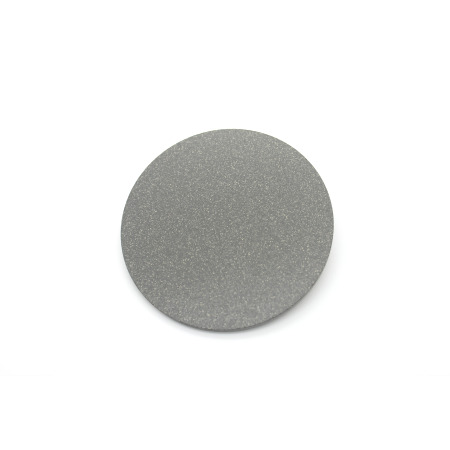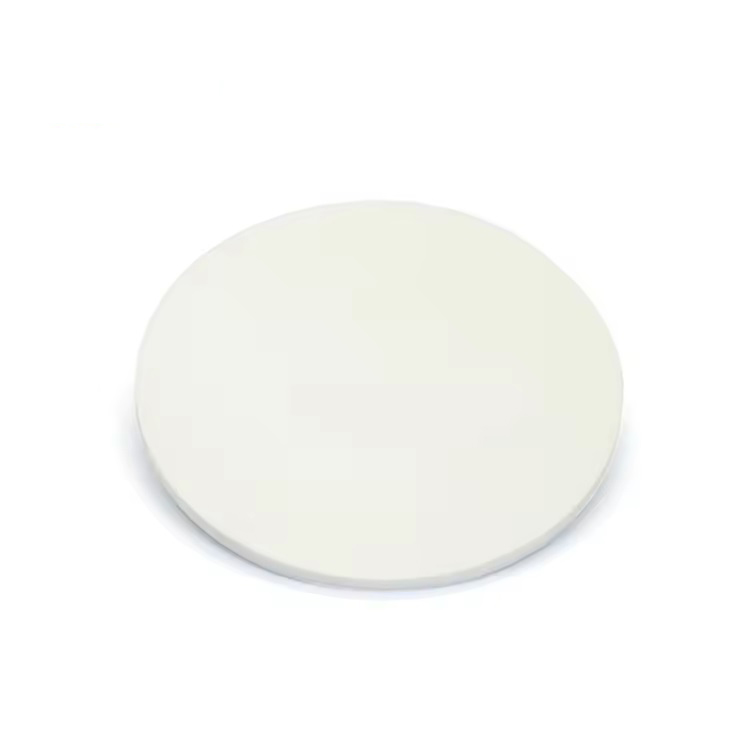Showing 97–108 of 246 results
-

- Antiferromagnetic Properties: IrMn alloy thin films exhibit strong antiferromagnetic behavior, which is essential for magnetic pinning in spintronic devices and memory storage.
- High Corrosion Resistance: Iridium provides excellent corrosion resistance, ensuring the durability and longevity of the deposited thin films, even in harsh environments.
- Thermal Stability: IrMn alloy films are thermally stable, making them ideal for high-temperature applications in electronic and magnetic devices.
- Customizable Size and Shape: IrMn sputtering targets are available in various sizes and shapes, including discs, plates, and custom geometries, to suit a wide range of deposition systems.
-


- High Transparency and Conductivity: ITO offers a balance of excellent transparency in the visible spectrum and good electrical conductivity, making it a perfect material for applications requiring both.
- Adjustable Stoichiometry: The ratio of In2O3 to SnO2 in ITO can be adjusted to optimize its electrical and optical properties for specific applications.
- Thin-film Uniformity: ITO films are known for their uniform thickness and quality, essential for ensuring consistent performance across large-area coatings like touchscreens and solar panels.
- Durability: ITO films are chemically stable and durable, providing long-term performance in various environmental conditions.
- Custom Purity Levels: ITO sputtering targets are available in a variety of purities (up to 99.999%) to meet the stringent requirements of high-performance electronic and optical devices.
-


- High Optical Transparency: Enables the creation of efficient transparent films.
- Superior Conductivity: Provides excellent electrical performance for electronic applications.
- Thermal and Chemical Stability: Ensures reliability in high-temperature and reactive environments.
- Customizable Material Composition: Optimized for specific TCO requirements.
- Compatibility: Suitable for RF and DC sputtering systems.
-


Lanthanum sputtering targets are crucial for creating thin films with specific electronic, optical, and catalytic properties, making them valuable in advanced technologies such as semiconductors, optics, superconductors, and energy storage systems. Despite its reactivity, lanthanum’s unique characteristics provide significant advantages in various high-tech industrial and scientific applications.
-

- High Dielectric Constant: La₂O₃ exhibits a high dielectric constant, making it an excellent material for advanced electronic components, such as gate dielectrics in MOSFETs.
- High Refractive Index: Its high refractive index makes it ideal for enhancing optical properties in coatings for lenses, filters, and other precision optical devices.
- Thermal and Chemical Stability: La₂O₃ is highly stable under extreme temperatures and chemically resistant, making it suitable for high-performance applications.
- Catalytic Efficiency: Lanthanum oxide’s catalytic properties are leveraged in thin films used for environmental and energy applications.
-

- High Dielectric Constant: LaAlO₃ has a high dielectric constant (k-value), which enhances its performance in capacitors and other high-k dielectric applications.
- Thermal Stability: LaAlO₃ exhibits excellent thermal stability, making it ideal for high-temperature processing and devices that operate in extreme environments.
- Structural Integrity: The perovskite structure of LaAlO₃ contributes to its high mechanical strength and chemical stability, ensuring long-lasting performance in demanding applications.
- Oxide Electronics: LaAlO₃ is widely used in complex oxide electronics due to its ability to form high-quality interfaces with other materials like SrTiO₃ and LaNiO₃.
-


- High Thermal Stability: Performs well in high-temperature environments.
- Superior Electrical Conductivity: Ideal for electronic and thermionic applications.
- Low Work Function: Enables efficient electron emission.
- Oxidation Resistance: Long-lasting performance under challenging conditions.
- Customizable Specifications: Tailored to meet specific application needs.
-

- Exceptional Ionic Conductivity: Enhances energy transfer in battery technologies.
- Stable and Durable: Chemically stable under a wide range of operating conditions.
- High Dielectric Constant: Ideal for electronic and capacitor applications.
- Customizable: Available in multiple sizes, shapes, and purity levels to meet specific application needs.
- Compatible: Works efficiently with various sputtering deposition systems.
-

- High Purity: Guarantees low contamination for critical applications.
- Chemical Stability: Resistant to degradation, ensuring durable coatings.
- Superior Ionic Conductivity: Optimal for battery and energy storage films.
- Consistent Deposition: Ensures uniform and reliable thin-film performance.
- Customizable Dimensions: Adaptable to different sputtering systems and requirements.
-


- High Stability: Li₄Ti₅O₁₂ has excellent chemical and structural stability, making it an ideal material for long-lasting energy storage devices.
- Low Volume Expansion: This material shows minimal expansion and contraction during charge/discharge cycles, improving battery longevity.
- Thermal Safety: Li₄Ti₅O₁₂ has a high thermal stability, reducing the risk of overheating in energy storage devices.
- Fast Charging Capability: The material is recognized for its fast charge/discharge properties, making it suitable for high-performance batteries.
-


- High Energy Density: LiCoO₂ has a high theoretical energy density, making it an ideal material for battery cathodes, especially in high-performance applications like electric vehicles and portable electronics.
- Stable Structure: The layered crystal structure of LiCoO₂ contributes to its stable electrochemical performance, which is crucial for the long-term operation of lithium-ion batteries.
- Excellent Cycling Performance: LiCoO₂ can undergo many charge and discharge cycles without significant degradation, ensuring reliable performance in rechargeable battery systems.
- Thin Film Deposition: LiCoO₂ sputtering targets allow for the precise deposition of thin films in applications requiring uniform coatings, such as in thin-film batteries and microelectronics.
-

- High Optical Transparency: LiF has high optical transparency in the UV, visible, and infrared regions, making it an excellent material for optical coatings and components.
- Wide Bandgap: LiF has a wide bandgap (~13.6 eV), which makes it an excellent insulating material in electronic and optoelectronic applications.
- Low Absorption: LiF thin films exhibit low absorption across a broad spectral range, making them ideal for applications where minimal light loss is required.
- Chemical Stability: LiF is chemically stable and resistant to moisture, which contributes to its durability in harsh environments and long-lasting performance in thin-film coatings.
- Insulating Properties: LiF has excellent insulating properties, which are beneficial for electronic and optoelectronic devices where electrical isolation is needed.


















